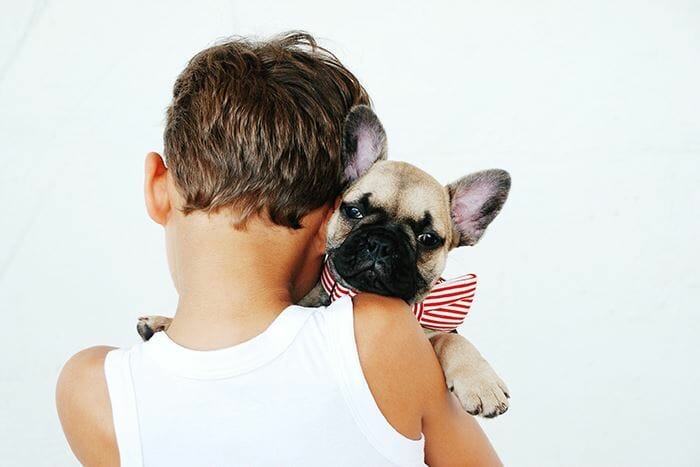How Does Having A Pet Teach A Child Responsibility?

While picking the right education and entertainment can go a long way, you’ll also need to provide your child with a stable home environment. But there’s another critical thing you can do to help your child prepare for being an adult: getting them a pet.
Getting your child a pet will help to teach them responsibility, but it will also teach them how hard it can be to take care of someone else. They’ll appreciate your parenting even more and become mature much faster as a result.
In this article, we’ll talk about why having a pet is a great way to help your child grow. The crux of the reason why having a pet helps your child learn to be responsible is that having a pet teaches your child to think about their obligations in a way that takes ownership.
It’s All About the Mindset
The way that having a pet teaches children responsibility may not be clear at first. After all, it’s entirely possible for someone to neglect their pet. That’s where you come in.
While your child is learning to take care of their pet, you’ll be there to step in and set them straight if they seem to be leaving their pet high and dry. Eventually, they’ll recognize that the times when you’ve been stepping in are times that they should have been stepping up.
The point of fostering responsibility is not to merely get your child to feed and water the pet whenever it needs help. Instead, responsibility helps your child to view the world differently.
Specifically, your child will view the things that need to get done — like feeding the pet — as mandatory actions rather than potentialities.
Having a creature which relies on your child for its sustenance helps your child to create a bond. Once that bond is built, your child will stop thinking about doing chores for their pet in the frame of “chores” but in the frame of essential things like brushing their teeth.
Habits eventually become impulses. The longer your child cares for their pet, the more they won’t be able to resist the prospect of feeding and walking it.
Rather than being a voluntary action, the responsibilities needed to keep the pet happy and healthy becomes an unconscious impulse which your child will serve without expending any mental effort.
Indeed, your child will eventually find that not serving their pet’s needs will incur a larger mental load than simply fulfilling their obligations. This is the core of being responsible: desiring to fulfill obligations to the point where not fulfilling them is more trouble than it is worth.
As your child gets into the habit of providing for their pet, they will eventually learn to anticipate their pet’s needs and plan their schedule around fulfilling those needs. This will reduce the challenge of performing the actions needed to provide for the pet until they are automatic.
Why Pets Matter
Once your child automatically takes care of their pet, they’ve succeeded in reaching the mindset of responsibility. In the mindset of responsibility, the needs of the pet are internalized by your child as their own needs.
The result is that they won’t procrastinate or hem and haw about addressing their pet’s needs. Much like how your child does not need instructions for when to visit the bathroom, your child will not need instructions for when to take out their pet or when to give their pet a meal.
The needs of the pet will become an automatic part of your child’s life, and they will gain an intrinsic motivation to meet the needs of their pet. Building intrinsic motivation is great because it is a skill that your child will be able to apply elsewhere in their life.
For instance, once your child has built the intrinsic motivation to care for their pet, they can be taught to have intrinsic motivation for other tasks, like their homework.
Much like how they reflexively care for their pet and for themselves, doing their homework can become a necessary task that is performed without any grumbling or attempts to weasel away.
After all, much like their pet, your child’s homework isn’t about to go away, and nobody else is going to take the burden of doing it — it’s something that needs to be done one way or the other, so they may as well get on with it.
Building this mindset is the strongest argument in favor of using a pet to create a sense of responsibility in your child.
Can My Child Handle A Pet?
Depending on how old your child is, you may question whether or not they are ready for a pet. Most children are ready to rise the occasion of having a pet, but you will probably need to help out if they pick a harder pet.
Your child will have a much easier time handling their pet and becoming responsible with a pet that is age-appropriate. The youngest children are probably competent to take care of an ant farm, whereas older children are more likely to flourish when they have a dog.
On the other hand, your child probably has a preferred kind of pet. You may want to push back on your child if they pick a pet that is far too difficult for them to take care of, like some lizards.
If your child wants to try their luck with a pet that might require them to grow into the role, however, you should go for it.
Remember, you’ll have to help with the pet sometimes — potentially, a lot of the time! Be sure to pick a pet that you will enjoy having around too. This means that getting a pet that is a big commitment — like a dog — might be better if it’ll make you more engaged in your child’s growing responsibilities.
